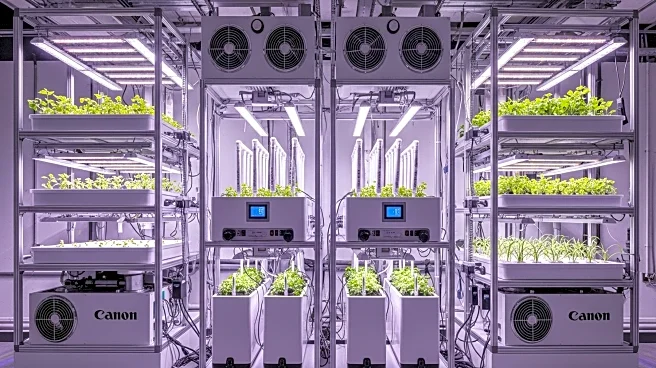What's Happening?
Recent scientific research has unveiled four intriguing discoveries related to beer and wine, as published in the Journal of Agricultural and Food Chemistry. The studies explore the haziness in lager beer, gluten detection in beverages, the astringent taste of red wine, and the impact of sulfites on the gut microbiome. Researchers found that yeast extracts can be used to create haze in lager beer by interacting with proteins, offering an alternative to traditional methods. A new lateral flow test has been developed to detect gluten in food and drinks, providing results in under three minutes with high accuracy. Additionally, the astringent taste of red wine, often described as drying, is linked to tannins affecting water channels in the mouth. Lastly, sulfites in wine, while preserving the beverage, can alter the gut microbiome, potentially affecting health.
Why It's Important?
These findings have significant implications for consumers and the beverage industry. The ability to manipulate beer haziness through yeast extracts could lead to new product offerings and cater to consumer preferences for hazy beers. The gluten detection test is crucial for individuals with gluten sensitivities or celiac disease, ensuring safer consumption of beverages. Understanding the astringency of red wine can enhance consumer experience and guide winemakers in refining their products. The study on sulfites highlights potential health considerations for consumers, particularly those sensitive to these compounds, and may influence labeling and production practices in the wine industry.
What's Next?
The beverage industry may explore the commercial application of yeast extracts for creating hazy beers, potentially leading to new product lines. The gluten detection test could be adopted widely, providing a reliable tool for manufacturers and consumers to ensure gluten-free claims. Winemakers might adjust tannin levels to modify the astringency of wines, enhancing consumer satisfaction. Further research into the health impacts of sulfites could lead to changes in wine production and labeling, addressing consumer health concerns and regulatory standards.
Beyond the Headlines
These discoveries also touch on broader themes of consumer safety and product innovation. The gluten detection test represents a step forward in food safety technology, reflecting growing consumer demand for transparency and health-conscious products. The exploration of sulfites' effects on the gut microbiome underscores the complex relationship between food additives and health, potentially influencing future regulatory policies. The research into beer and wine composition highlights the ongoing scientific interest in traditional beverages, driving innovation while respecting historical production methods.










